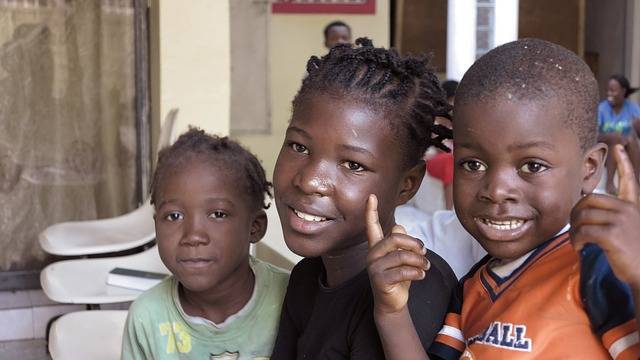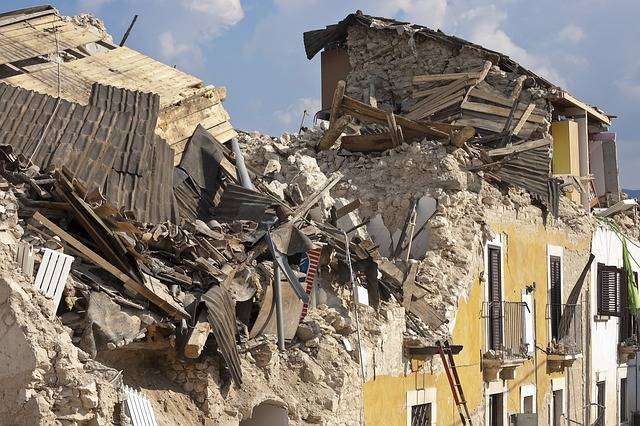On January 12th, 2010, a 7.0 magnitude earthquake struck Haiti and changed the lives of millions forever. The devastating quake caused widespread destruction throughout the country, leaving hundreds of thousands homeless and claiming an estimated 316,000 lives in its wake. In this article, we will take a closer look at the human cost of this natural disaster by uncovering the tragic death toll from Haiti’s 2010 Earthquake and remembering those who perished in one of history’s most unforgettable catastrophes.
- Uncovering the Tragic Death Toll of Haiti’s 2010 Earthquake
- How Many Lives Were Lost in the Devastating Haiti Quake?
- The Human Cost of a Natural Disaster: Examining Haiti’s Earthquake Casualties
- Remembering Those Who Perished in the 2010 Haitian Earthquake
- A Closer Look at the Impact of an Unforgettable Catastrophe: The 2010 Haitian Earthquake
The 2010 Haiti earthquake was one of the most devastating natural disasters in recent history. On January 12th, a magnitude 7.0 earthquake struck the Caribbean nation of Haiti, leaving an estimated 220,000 people dead and 1.5 million homeless. The death toll from this tragedy is staggering and has left many wondering how such a disaster could have happened in such a small country with limited resources to cope with it?
In the immediate aftermath of the quake, estimates for casualties ranged from 100,000 to 230,000 people killed as buildings collapsed throughout Port-au-Prince and other cities across Haiti’s southern peninsula. As rescue teams searched through rubble for survivors over days and weeks following the quake’s initial shockwaves on January 12th 2010 ,the official death toll rose steadily until it reached its current figure of around 220 000 deaths .
The Haitian government declared three days of national mourning after learning that so many lives had been lost due to this catastrophic event; however some believe that even more lives were taken than what was initially reported by officials at first glance . This is because there are still thousands unaccounted for who may have perished during or shortly after the quake but whose bodies were never found or identified .
It’s difficult to comprehend just how much destruction occurred within those few short minutes when Mother Nature unleashed her fury upon Haiti back in 2010; however we can take solace knowing that aid organizations around world responded quickly with relief efforts which helped save countless lives afterwards . We must also remember those who did not survive this tragedy – their memory will live on forever as we strive towards building better infrastructure so future generations won’t suffer similar tragedies again anytime soon .
Uncovering the Tragic Death Toll of Haiti’s 2010 Earthquake

The 2010 Haiti earthquake was one of the deadliest natural disasters in modern history. The magnitude 7.0 quake caused widespread destruction, leaving an estimated 316,000 people dead and 1.5 million homeless. But despite the immense human toll of this tragedy, it has been difficult to accurately determine just how many lives were lost in the disaster.
In the aftermath of such a devastating event, it is not uncommon for governments to struggle with obtaining reliable data on casualties due to lack of resources or political instability in affected areas. This was certainly true for Haiti’s government after their country experienced its worst earthquake since 1770—the official death toll reported by Haitian authorities at first was 230,000 people; however that number quickly rose as more information became available from international aid organizations and other sources outside of Haiti itself.
As time passed and more accurate estimates began to emerge from researchers around the world—including those from Harvard University who conducted a survey-based study on mortality rates among Haitians following the quake—it became clear that far more than 230 thousand had perished in this tragedy: over 300 thousand deaths were attributed directly or indirectly to this catastrophic event according to various reports released between 2011-2013 (with some estimates even higher).
How Many Lives Were Lost in the Devastating Haiti Quake?

The 2010 Haiti earthquake was one of the most devastating natural disasters in recent history. The magnitude 7.0 quake struck on January 12, 2010 and left a path of destruction that would take years to recover from. It is estimated that over 300,000 people were killed in the disaster, making it one of the deadliest earthquakes ever recorded.
The death toll from this tragedy was so high because many buildings were not built to withstand such a powerful earthquake and collapsed quickly as a result. Many homes made out of mud and straw also crumbled under the force of the quake, leaving thousands homeless or trapped beneath rubble for days before they could be rescued or recovered by rescue teams.
In addition to those who died directly due to injuries sustained during the quake itself, many more lives were lost due to secondary effects like disease outbreaks caused by lack of access to clean water and sanitation facilities; food shortages resulting from destroyed crops; displacement caused by damaged infrastructure; mental health issues related to trauma experienced during this time; and other factors associated with living through such an eventful period in Haitian history .
The Human Cost of a Natural Disaster: Examining Haiti’s Earthquake Casualties
The 2010 Haiti earthquake was one of the most devastating natural disasters in recent history, claiming over 200,000 lives and leaving millions more homeless. In addition to the physical destruction caused by the quake itself, its aftermath has had a profound impact on Haitian society. One of the most tragic aspects of this disaster is its human cost: examining Haiti’s earthquake casualties reveals just how much suffering and loss were inflicted upon an already vulnerable population.
In terms of sheer numbers alone, it is estimated that between 230-316 thousand people died as a result of the quake—a staggering figure that speaks to both its magnitude and intensity. But beyond these raw statistics lies a heartbreaking story about individual lives cut short in an instant; families torn apart; dreams shattered; futures lost forever.
The majority of those who perished were poor Haitians living in shantytowns or other informal settlements around Port-au-Prince—areas particularly prone to damage due to their precarious construction methods and lack of seismic protection measures such as reinforced concrete buildings or adequate drainage systems for floodwaters during heavy rains. This means that many victims may have been unable to escape quickly enough when disaster struck—trapped beneath collapsed structures with no hope for rescue or survival until help arrived from outside sources days later (if at all).
It is also important not forget about those who survived but still suffered greatly due to injuries sustained during the quake: amputations resulting from crushed limbs; psychological trauma caused by witnessing death or destruction firsthand; long term health complications arising from exposure to contaminated water supplies after sanitation systems failed following infrastructure damage…the list goes on endlessly, painting a bleak picture indeed.
Remembering Those Who Perished in the 2010 Haitian Earthquake
The 2010 Haitian earthquake was a devastating event that left an indelible mark on the nation and its people. The 7.0 magnitude quake struck at 4:53 pm local time on January 12, 2010, with its epicenter located just 16 miles west of Port-au-Prince.
The powerful temblor caused widespread destruction throughout the region, leaving more than 250,000 people dead and 1 million homeless in its wake. In addition to the human toll it took on Haiti’s population, over 200 schools were destroyed or damaged by the quake as well as countless homes and businesses.
It is estimated that up to 3 million people were affected by this tragedy in some way or another; many of whom are still struggling to rebuild their lives today nearly 10 years later. As we remember those who perished in this terrible disaster we must also recognize those who have been able to survive despite all odds – from survivors whose stories have inspired us all around the world to aid workers who continue their tireless efforts every day towards rebuilding Haiti’s infrastructure and economy for future generations of Haitians alike.
A Closer Look at the Impact of an Unforgettable Catastrophe: The 2010 Haitian Earthquake
The 2010 Haitian earthquake was one of the most devastating natural disasters in recent history. The magnitude 7.0 quake struck on January 12, 2010 and caused widespread destruction across Haiti’s capital city of Port-au-Prince and surrounding areas. In the aftermath, it became clear that the death toll was immense – estimates range from 220,000 to 316,000 people killed by the disaster.
This tragedy had a profound impact on Haiti’s population as well as its infrastructure and economy; many homes were destroyed or damaged beyond repair while businesses were shuttered due to lack of resources or customers. Additionally, an estimated 1 million people were left homeless due to displacement from their homes or because they could not return home safely after evacuation orders were issued during rescue efforts following the quake.
The effects of this catastrophe are still felt today; many Haitians remain displaced with limited access to basic services such as healthcare and education while others struggle with poverty exacerbated by job losses resulting from business closures in affected areas post-quake. Furthermore, mental health issues have been identified among survivors who experienced trauma related to loss of loved ones or property damage during this time period – a reminder that even years later we must remember those who suffered through this unforgettable event so that we can better understand its lasting legacy for future generations in Haiti and around world alike..